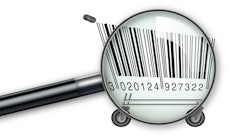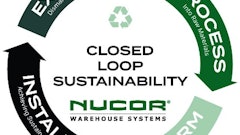
Effectively controlling the movement of perishable foods poses a significant challenge for supply chain management operations. From production to processing to distribution, each phase of the supply chain carries risks of overproduction, delays, spoilage, waste, and resulting financial losses.
The high cost of food spoilage
Perishable goods—fruits, vegetables, dairy products, and meats—require special handling and care to maintain their freshness from farm to fork. Supply chains for perishable goods are complex and involve numerous stakeholders: farmers, processors, distributors, retailers, and logistics providers. Any breakdown in communication or inefficiencies in between can lead to significant losses for all parties involved.
A study from The Food and Agriculture Organization (FAO) revealed that approximately 14% of food spoils before it ever reaches retailers, resulting in a loss of $400 billion annually. Aside from the financial impact of spoilage, losses such as food insecurity and environmental degradation add up and significantly impact profitability for every stakeholder.
Solving for perishable food loss is not an easy task. It requires a multifaceted approach involving technology, data analysis, risk management, collaboration, and transparency amongst all partners at every point in the supply chain.
Minimize spoilage by mitigating the risk
One of the most effective ways to reduce perishable food spoilage is to anticipate risk to avoid transport disruption. Let’s face it—disruptions from natural disasters, wars, and other causes—have become increasingly common.
That’s why supply chain teams are increasingly adopting a data-driven approach to handling disruptions before they occur. To do this effectively, it is best to leverage data from several sources: for example, location tracking or the current temperature of a container holding perishable goods. Data sources might include advanced track-and-trace systems armed with GPS, RFID, and Internet of Things (IoT) to monitor shipments from production facilities to distribution centers.
In addition, supply chain managers can proactively tackle operational issues that can also lead to food spoilage: transportation delays, regulatory compliance problems, or supplier shortages. Regardless of the cause, conducting comprehensive risk assessments and developing contingency plans is crucial to keeping your company one step ahead of supply chain risks.
Heightened visibility allows for thorough risk assessment and facilitates better risk mitigation once risks are identified or in the event that an unexpected disruption occurs. The most significant risks to your supply chain aren't necessarily the disruptions you anticipate; instead, it's the disruptions that catch you off guard and require a swift, unique response. With real-time data tracking and analytics, supply chain managers can promptly identify potential risks and take proactive measures to address them, minimizing any impact on perishable goods and ensuring the continuity of operations.
Use network mapping to identify where disruptions might occur
Aside from increased visibility, network mapping is another valuable tool for identifying vulnerabilities within your supply chain. By mapping out the flow of goods, information, and resources across their supply chain, companies can pinpoint potential bottlenecks, single points of failure, and possible areas of inefficiency.
Supply chains are intricate systems that require constant attention to ensure they operate smoothly. Every detail of a supply chain must be continually monitored, reviewed, and upgraded to ensure long-term success and uninterrupted flow of operations. Moreover, network mapping is an excellent way to not only identify any weak links within a supply chain, but also to fortify them.
Another strategy for minimizing perishable food spoilage is to optimize the design of the supply chain itself. This may involve streamlining transportation routes, consolidating distribution centers, or redesigning production processes to minimize waste and maximize efficiency. By reducing complexity and increasing transparency, companies can improve their ability to respond to any disruptions and ensure timely delivery of perishable goods.
Included under the umbrella of optimizing supply chain design is building strong relationships with suppliers, carriers, and other stakeholders. By creating an environment of trust and transparency, companies can share information and resources to connect the dots and optimize every link in the supply chain. When things go wrong, it’s essential to have clear communication and joint problem-solving to reduce risk and exposure.
Case in point: Navigating customs clearance
International trade presents unique challenges for perishable food supply chains, particularly when it comes to customs clearance. Delays in customs processing can lead to extended transit times, resulting in increased costs and greater risks of food spoilage. To expedite customs clearance, companies need to work closely with customs authorities, maintain accurate documentation, and use technology for real-time tracking and monitoring.
Common victims of slow customs clearances are companies that manage cold chains. Cold chains are supply chains transporting perishable foods that must maintain a consistent temperature throughout their entire journey from production to consumption.
As such, maintaining the integrity of a cold chain is critical for preserving the freshness and quality of perishable foods. By investing in advanced refrigeration technologies, temperature sensors, and data logging systems, companies can minimize the risk of temperature excursions and ensure compliance with food safety regulations. While expensive, if done properly, cold chain management can generate substantial cost savings in the long run.
Consider the example of a leading food manufacturer specializing in frozen seafood products. By deploying state-of-the-art cold chain management technologies, including IoT-enabled refrigeration units and real-time temperature monitoring systems, the company was able to maintain strict temperature controls throughout its supply chain. As a result, the manufacturer saw a significant reduction in product losses due to spoilage, while enhancing their product quality and safety at the same time.
Future-proofing with data: How insights today can prevent tomorrow's problems
Reducing perishable food spoilage in supply chains requires a combination of proactive measures, strategic planning, and collaborative partnerships—all of which can be powered by insights from reliable data. With enhanced visibility, companies can strategically invest in optimizing their supply chain design, implementing the best cold chain management practices, and adjusting routes or renegotiating with suppliers and shippers. This way, companies can dramatically minimize losses, improve efficiency, and enhance the sustainability of their operations. Collectively, this creates an environment that reduces worldwide food spoilage losses, and, in doing so, maximizes profits for all stakeholders across a supply chain.


























